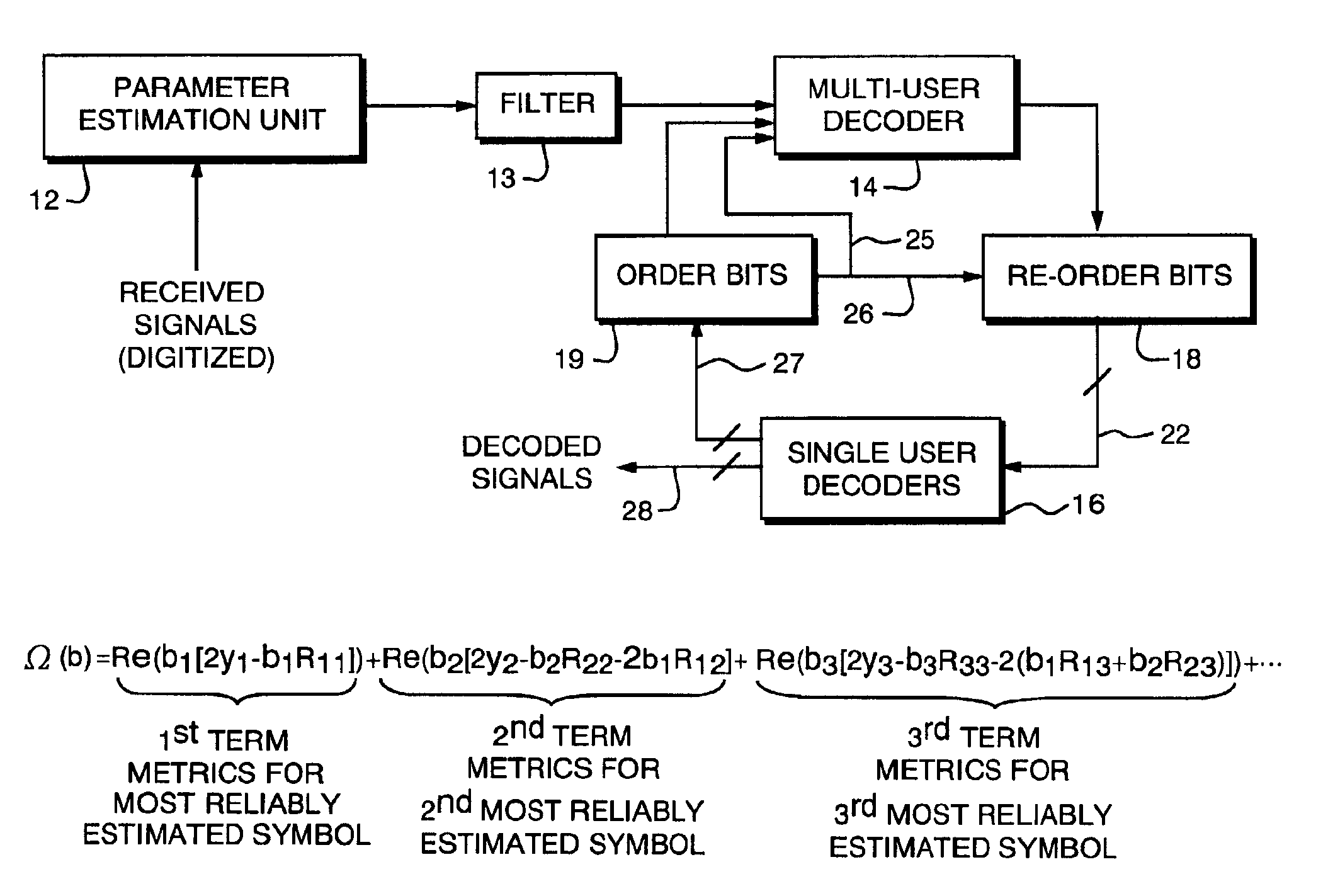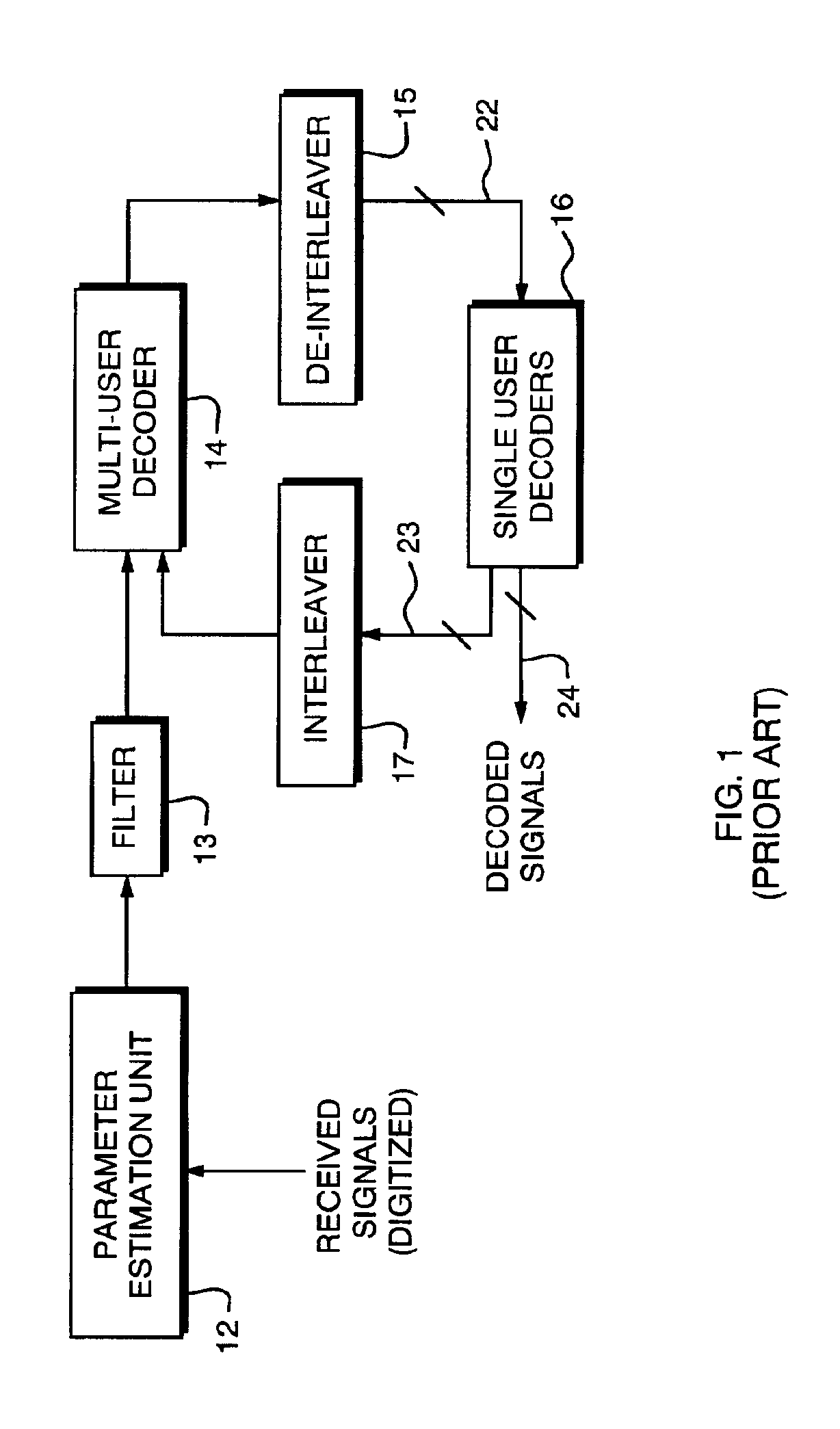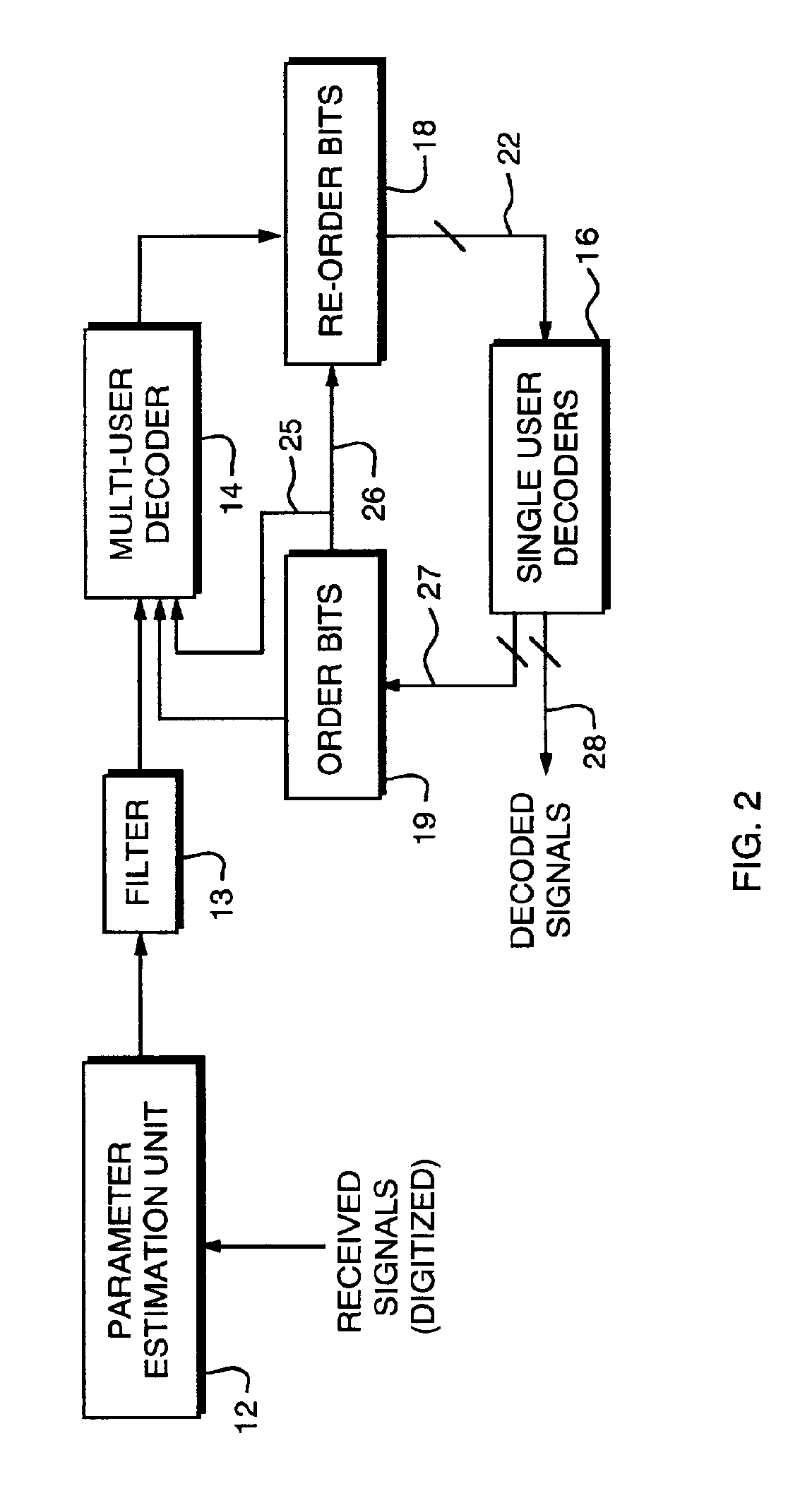Method and apparatus for improved turbo multiuser detector
a detector and multi-user technology, applied in the field of communication, can solve the problems of increasing infrastructure costs, reducing cell size or reducing the number of signals received by the detector, and not always economically feasible, and achieve the effect of reducing signal processing tim
- Summary
- Abstract
- Description
- Claims
- Application Information
AI Technical Summary
Benefits of technology
Problems solved by technology
Method used
Image
Examples
Embodiment Construction
[0028]In FIG. 1 is shown a simplified block diagram of a portion of a prior art receiver circuitry utilizing iterative turbo decoding to separate multiple interfering signals on the same communication channel. It shows an implementation of a prior art turbo multi-user detector (turboMUD) used to incorporate turbo decoding techniques into MUD with forward error correction (FEC) decoding.
[0029]The operation of this prior art, turbo multi-user detector (turboMUD) assumes knowledge of various parameters about received signals such as relative received timing offsets, carrier phase, frequency offsets, received amplitudes, and multi-path structure for each of the interfering signals present in the received signal. A parameter estimation unit 12 is therefore needed. In a turboMUD system decoding, probability estimate and channel symbol estimate information is repeatedly passed between a multi-user decoder (MUD) 14 and a plurality of single-user decoders 16. Soft output decoders, such as ma...
PUM
 Login to View More
Login to View More Abstract
Description
Claims
Application Information
 Login to View More
Login to View More - R&D
- Intellectual Property
- Life Sciences
- Materials
- Tech Scout
- Unparalleled Data Quality
- Higher Quality Content
- 60% Fewer Hallucinations
Browse by: Latest US Patents, China's latest patents, Technical Efficacy Thesaurus, Application Domain, Technology Topic, Popular Technical Reports.
© 2025 PatSnap. All rights reserved.Legal|Privacy policy|Modern Slavery Act Transparency Statement|Sitemap|About US| Contact US: help@patsnap.com



